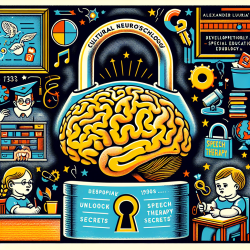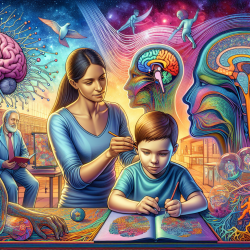Unlocking the Secrets of Luria: How a 1930s Theory Can Revolutionize Modern Special Education!
In the ever-evolving field of neuroscience and special education, the work of Russian scholar Alexander Luria offers a timeless perspective that remains remarkably relevant today. Luria's holistic approach to understanding mental retardation through a developmental lens provides invaluable insights for practitioners seeking to enhance their skills and create better outcomes for children.
Luria's work, particularly his early research presented at the First International Congress of Child Psychiatry in Paris in 1937, challenges conventional methods of understanding mental retardation. His dissatisfaction with the then-prevailing reliance on broad statistical tests, such as IQ tests, led him to advocate for in-depth clinical case studies. These studies aimed to distinguish between retardation resulting from social circumstances and that caused by organic defects.
The Developmental Approach
Unlike traditional methods that focused on identifying direct relationships between specific diseases and neuropsychological dysfunctions, Luria's developmental approach viewed mental retardation as a defect occurring during development. This perspective emphasized the interconnectedness of mental functions and the necessity of understanding normal development to comprehend mental retardation fully.
Luria's case studies, such as those of Fedia K., a 14-year-old with visual agnosia, and identical twins Yura and Lyosha Sh., who had a speech impediment, illustrate the profound impact of developmental disruptions. These cases highlight how damage to a psychological process at an early stage can lead to significant developmental challenges.
Implications for Modern Practitioners
For contemporary practitioners, Luria's insights offer several key takeaways:
- Holistic Assessment: Practitioners should adopt a holistic approach when assessing children with developmental challenges, considering the broader developmental context rather than focusing solely on isolated symptoms.
- Individualized Interventions: Tailored interventions that address the specific developmental needs of each child are crucial. Luria's work underscores the importance of understanding the role of different brain functions in a child's development.
- Collaboration and Integration: Collaboration among educators, therapists, and families is essential to create a supportive environment that fosters a child's development. Luria's approach encourages integrating various disciplines to address complex developmental issues.
Encouraging Further Research
Luria's work serves as a foundation for further research into the interplay between neuroscience and special education. By exploring the developmental aspects of mental retardation, researchers can uncover new insights into how different brain functions contribute to a child's overall development.
Moreover, Luria's emphasis on the role of cultural and social factors in development invites researchers to examine how these elements influence a child's cognitive and emotional growth. This holistic perspective opens up exciting possibilities for future studies and interventions.
Conclusion
Alexander Luria's pioneering work in the 1930s continues to offer valuable lessons for modern practitioners in the field of special education. By embracing his developmental approach and considering the broader context of a child's development, practitioners can create more effective interventions and support systems for children with developmental challenges.
To read the original research paper, please follow this link: “Back to the future”: toward Luria's holistic cultural science of human brain and mind in a historical study of mental retardation.










